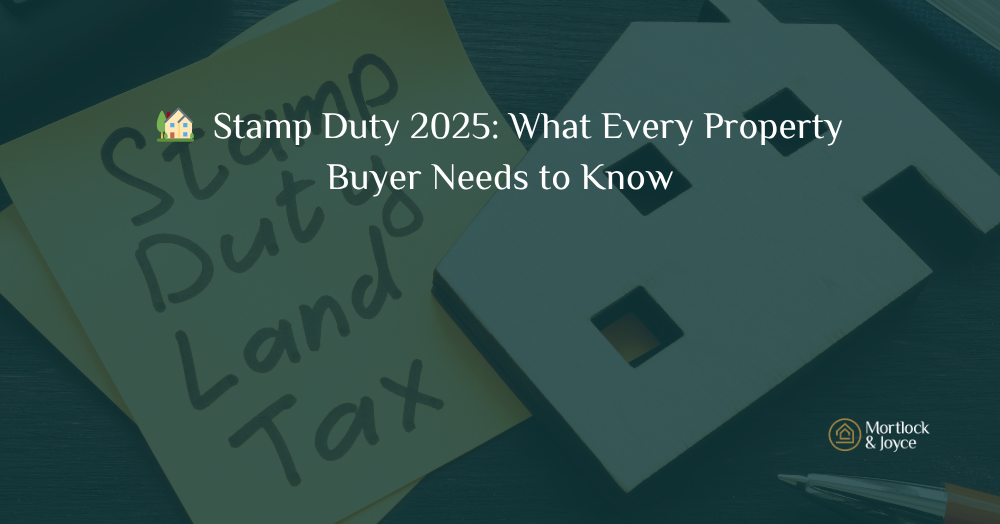Whether you’re buying your first home, moving up the ladder, or investing in a second property, Stamp Duty Land Tax (SDLT) can be one of the biggest extra costs you’ll face. And from 1 April 2025, things have changed—again.
In this blog, we break down what Stamp Duty looks like now, who it affects the most, and how you can plan smarter when buying your next property.
💡 First, What Is Stamp Duty?
Stamp Duty is a tax you pay when buying property or land in England and Northern Ireland. It’s calculated based on the purchase price of the property, with different rates applied to different bands.
And as of April 2025, the thresholds and reliefs have been adjusted—meaning most buyers will pay more than they would have in previous years.
📉 The Key Changes from 1 April 2025
Here’s what’s different now:
🔹 The 0% threshold has been reduced
Before: You paid no Stamp Duty on the first £250,000 of any property.
Now: The 0% band only covers up to £125,000. After that, tax starts kicking in.
🔹 First-Time Buyer Relief has been tightened
Before: First-time buyers paid nothing up to £425,000 and got a discount up to £625,000.
Now: The 0% relief only goes up to £300,000, with discounts tapering off at £500,000. Above that? You pay standard rates.
🔹 Higher charges for second homes and buy-to-let
The old 3% surcharge has been replaced by a stepped system, with rates as high as 17% on the most expensive purchases.
📊 The New Stamp Duty Rates (2025 Onward)
🏠 Standard Residential Rates
Rate Property Price Portion
0% £0 – £125,000
2% £125,001 – £250,000
5% £250,001 – £925,000
10% £925,001 – £1.5 million
12% Above £1.5 million
👶 First-Time Buyer Relief
SDLT Rate Property Price
0% Up to £300,000
5% on the amount over £300k £300,001 – £500,000
Standard rates apply Over £500,000
🏘️ Second Homes / Buy-to-Let Properties
Surcharge Rate Price Portion
5% £0 – £125,000
7% £125,001 – £250,000
10% £250,001 – £925,000
15% £925,001 – £1.5 million
17% Above £1.5 million
💷 Real-World Examples
Let’s say you’re:
🔹 A first-time buyer purchasing at £400,000
0% on first £300,000
5% on remaining £100,000 = £5,000 total SDLT
🔹 A home mover buying at £500,000
0% on £125k, 2% on next £125k = £2,500
5% on remaining £250k = £12,500
Total = £15,000
🔹 An investor buying a £350,000 buy-to-let
5% on first £125k = £6,250
7% on next £125k = £8,750
10% on final £100k = £10,000
Total = £25,000
✅ Tips for Buyers in 2025 and Beyond
- Factor SDLT into your budget early
- Don’t let tax derail your mortgage or deposit plans.
- Re-check your first-time buyer status
- You only qualify if you (and anyone you’re buying with) have never owned property anywhere.
- Think carefully about second homes
- That holiday cottage or rental property now comes with a much bigger tax bill.
- Use online calculators
- Most estate agents and property sites offer SDLT calculators to help you plan ahead.
- Consider timing
- If you’re in the process of buying, check how close you are to a major SDLT threshold. Negotiating just under it could save thousands.
🧾 When Do You Pay Stamp Duty?
You (or your solicitor) must pay the Stamp Duty and file a return to HMRC within 14 days of completing your purchase. Your solicitor usually handles it, but it’s your responsibility to make sure it’s done.
🏁 Final Thought
The Stamp Duty changes in April 2025 have made buying property more expensive—especially for first-time buyers in higher-priced areas, and for anyone buying an additional home. But with the right planning and professional advice, you can still navigate the system confidently and avoid any unexpected costs.
The key takeaway?
Know your numbers early and budget wisely. Stamp Duty isn’t optional—and it’s rarely cheap.
If you are interested to know all the costs of moving, click on the link below.


